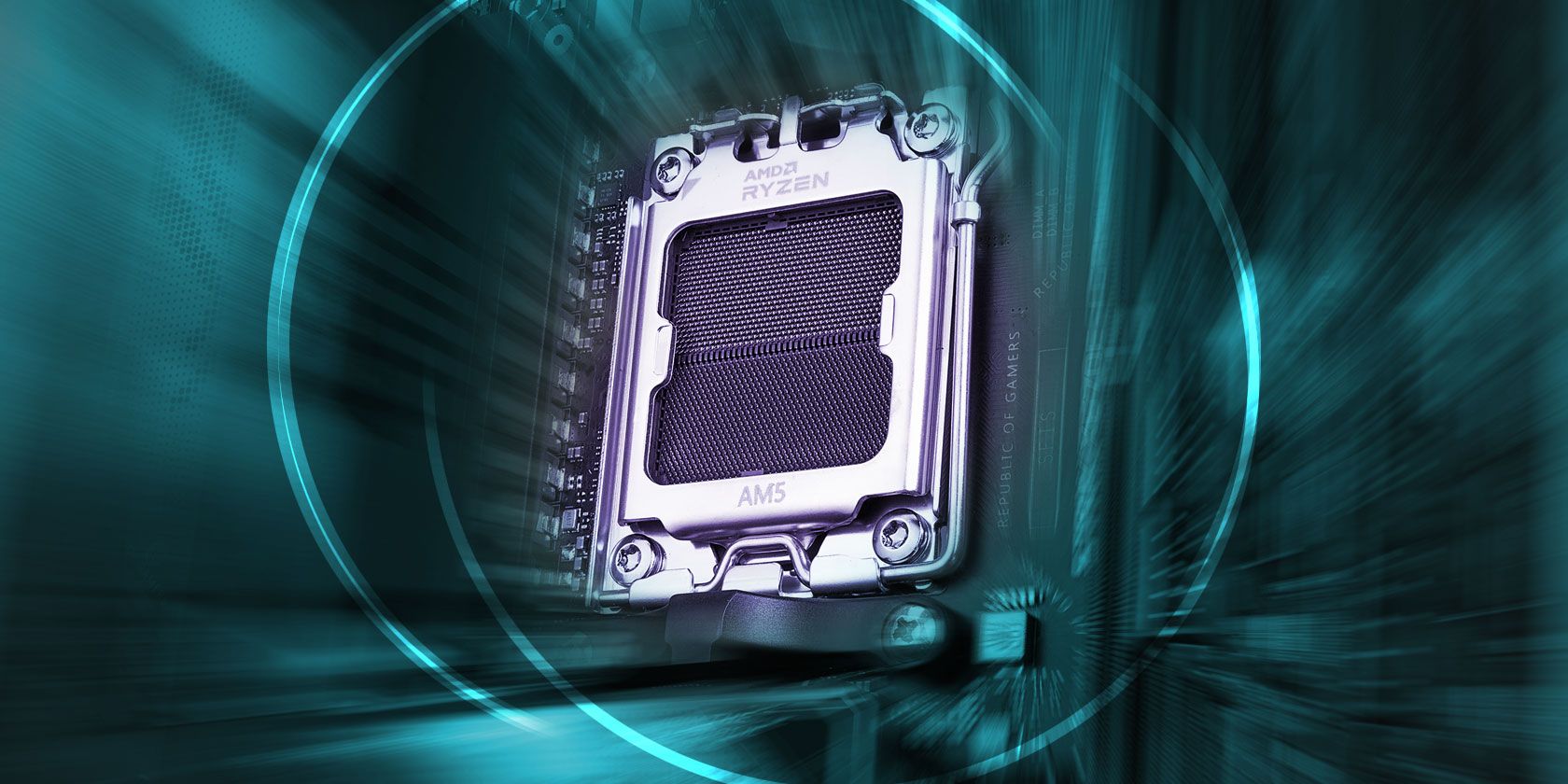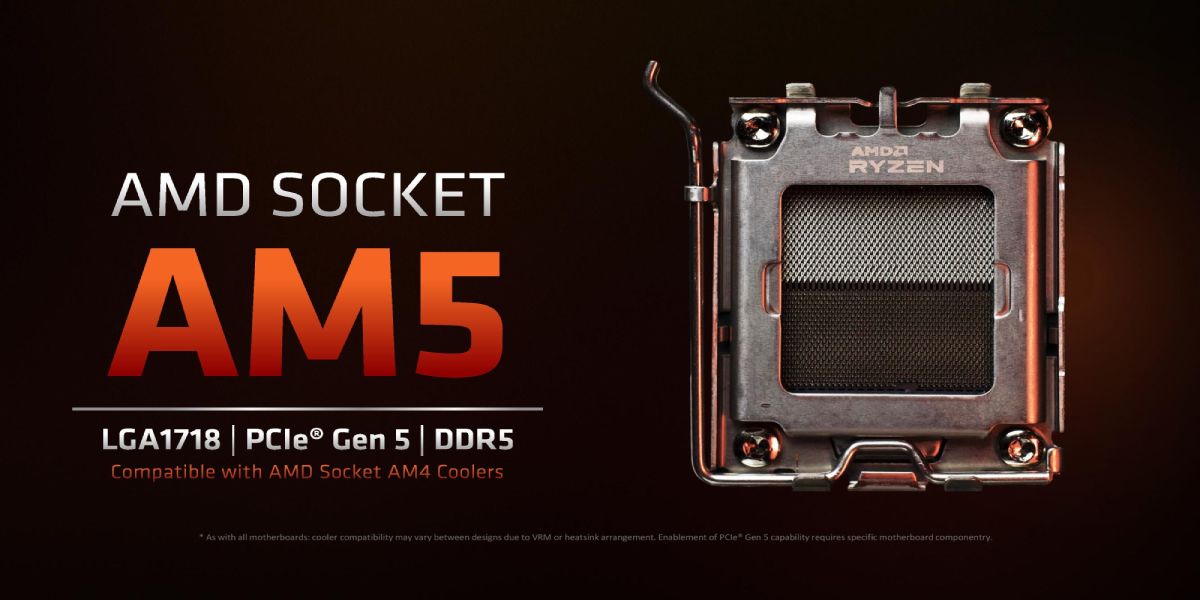With the arrival of Zen 4 CPUs, AMD unveiled its latest generation of AM5 motherboards featuring a brand new LGA socket, PCIe 5.0 connectivity, and DDR5 memory support.Unlike the AM4 platform, which offered three tiers of chipsets across different price points, AMD has decided to expand its 600 Series arsenal. The company has introduced two "Extreme" variants of its X670/B650-based motherboards: X670E as an enthusiast-level chipset and B650E as the more budget-friendly alternative.With that said, how do these motherboards stack up against their non-extreme counterparts, and which one should you opt for when buying a Ryzen 7000 Series CPU? Let's find out!
AMD AM5 Platform Overview
In an attempt to maximize Ryzen 7000's performance and efficiency standards, AMD has gone all out with the design philosophy of its 600 Series chipsets. Not only did AMD improve upon the power delivery mechanism of these new chipsets but it also brought in a plethora of updates over its existing AM4 platform.
Let us take a look at some of the features that are exclusive to the AM5 platform:
1. AMD's Transition to LGA Socket Type
With socket AM5, AMD is finally ditching its PGA (Pin Grid Array) based AM4 socket in favor of a more conventional yet reliable LGA (Land Grid Array) layout as seen on Intel and Threadripper CPUs. Doing so allows AMD to increase the pin density, enabling more power to flow to the socket, up to 170W TDP (Thermal Design Power) and 230W PPT (Package Power Tracking).
When comparing AM4 and AM5, socket AM4 uses 1331 contact points to power up its chipset, whereas the new AM5 socket type contains 1718 pins, 18 more than Intel's LGA 1700 socket in the same package size. Such a massive increase in pin density means the AM5 platform can take advantage of much higher bandwidth to and from its memory and PCIe slots.
2. DDR5 and PCIe Gen 5.0 Support
Besides the transition to LGA 1718, socket AM5 also includes native support for dual-channel DDR5 memory configuration along with PCIe Gen 5.0 on either the graphics or storage slots or both. However, unlike Intel's 12th and 13th-Gen CPUs, which are compatible with both DDR4 and DDR5 memory kits right out-of-the-box, AMD has sadly dropped DDR4 support entirely from its 600 Series motherboards.
While AMD's claims rely on the fact that the DDR4 memory standard has already reached the end of its life cycle and that DDR5 memory pricing should be more in line with DDR4 in the upcoming months, it seems hard to justify such a platform limitation, especially when it comes to versatility and value proposition.
Nevertheless, the memory controllers on socket AM5 have been rated for official JEDEC speeds up to DDR5-5200 for a 1 DPC (DIMM Per Channel) configuration or DDR5-3600 for a 2 DPC configuration.
3. AMD EXPO Technology
Alongside DDR5 memory compatibility, the AM5 platform also brings AMD's in-house EXPO (EXtreme Profiles for Overclocking) Technology, a one-click memory overclocking and tuning utility built specifically for Zen 4. While Intel's XMP, often cited as the standard for memory overclocking, still works on the Ryzen 7000 Series CPUs, EXPO takes it up a notch by allowing memory manufacturers to tweak sub-timings for a low-latency operation.
To date, AMD has partnered with more than 15 memory manufacturers, including ADATA, Corsair, Geil, G.Skill, and Kingston, to facilitate the production of high-performance DDR5 memory kits supporting the new EXPO Technology at speeds up to 6400 MT/s.
X670E vs. X670 Chipset
As mentioned earlier, AMD's top-of-the-line "X" series chipset comes in two variants for the AM5 platform: X670 and its "Extreme" version dubbed X670E. While both of these chipsets share the same core functionalities, there are some notable differences when it comes to their feature set.
For starters, both X670 and X670E chipsets provide comprehensive support for PCIe 5.0 and DDR5 memory compatibility, along with AMD's EXPO Technology. However, X670 motherboards miss out on a native PCIe 5.0 graphics slot as this feature has been limited to their NVMe storage slots.
Furthermore, the base X670 chipset also suffers from restrained data transfer bandwidth owing to a significant reduction in its PCIe lanes. To give you an idea, AMD's flagship X670E chipset supports up to a maximum of 44 PCIe lanes with 24 lanes running at Gen 5.0 speeds. X670, on the other hand, supports the same number of PCIe lanes as its Extreme variant, but only eight of these lanes make use of Gen 5.0 speeds.
Aside from the differences in PCIe bandwidth, both X670 and X670E chipsets offer significant improvements in I/O connectivity and overall design. For the first time on a consumer-based platform, AMD has opted to go for a multi-chip approach wherein both chiplets on the motherboard benefit from a lower TDP (~7W) and active cooling while reducing manufacturing costs at the same time.
In terms of I/O expansion, both chipsets provide up to 12 USB 10Gbps ports and 2 USB 20Gbps ports, along with 8 SATA 3.0 ports. Take a look at the AMD X670 and X670E specifications below to better understand the differences between the two chipset variants.
|
Specifications |
X670E |
X670 |
|---|---|---|
|
Socket |
AM5 |
AM5 |
|
PCIe Lanes (Graphics) |
1x16 or 2x8 (PCIe 5.0) |
1x16 or 2x8 (PCIe 4.0) |
|
PCIe Lanes (NVMe) |
1x4 (PCIe 5.0) |
1x4 (PCIe 5.0) |
|
Usable PCIe Lanes (Total/PCIe 5.0) |
44/24 |
44/8 |
|
Overclocking Support |
Yes |
Yes |
|
USB 10Gbps Ports (Up To) |
12 |
12 |
|
USB 20Gbps Ports (Up To) |
2 |
2 |
|
SATA 3.0 Ports (Up To) |
8 |
8 |
|
Memory Channels (Maximum Supported Speed) |
Dual Channel (DDR5-5200) |
Dual Channel (DDR5-5200) |
|
Integrated Wi-Fi 6E Support |
Yes |
Yes |
|
TDP |
14W (~7+7) |
14W (~7+7) |
|
Pricing |
$400-1500 |
$300-600 |
Therefore, if you are planning to upgrade your gaming/editing rig with a Ryzen 9 7950X or a Ryzen 9 7900X and are looking for a high-end motherboard with all the bells and whistles, consider X670E as your default choice.
However, if you are not bothered with the PCIe 5.0 ecosystem and want a feature-rich motherboard with a robust power delivery system and improved I/O connectivity, go for X670, as it has a more balanced set of features at a lower price point.
B650E vs. B650 Chipset
Coming to the mainstream chipset lineup, both B650 and B650E share the same differences as their "X" series counterpart. While the B650E motherboards support PCIe 5.0 on its graphics and NVMe storage slots, the base B650 chipset offers PCIe 5.0 support as an optional feature on any one of its M.2 slots.
Nevertheless, both chipset variants provide significant overclocking and thermal headroom owing to a steep increase in VRM power stages over their previous generation. Although AMD hasn't enforced a dual-chip design on either the B650E or its non-extreme sibling, both of these chipsets benefit from a ton of I/O options with up to 6 USB 10Gbps ports, 1 USB 20Gbps port, and a maximum of 4 SATA 3.0 ports.
|
Specifications |
B650E |
B650 |
|---|---|---|
|
Socket |
AM5 |
AM5 |
|
PCIe Lanes (Graphics) |
1x16 or 2x8 (PCIe 5.0) |
1x16 or 2x8 (PCIe 4.0) |
|
PCIe Lanes (NVMe) |
1x4 (PCIe 5.0) |
1x4 (PCIe 4.0/PCIe 5.0 Optional) |
|
Usable PCIe Lanes (Total/PCIe 5.0) |
36/24 |
36/0 |
|
Overclocking Support |
Yes |
Yes |
|
USB 10Gbps Ports (Up To) |
6 |
6 |
|
USB 20Gbps Ports (Up To) |
1 |
1 |
|
SATA 3.0 Ports (Up To) |
4 |
4 |
|
Memory Channels (Maximum Supported Speed) |
Dual Channel (DDR5-5200) |
Dual Channel (DDR5-5200) |
|
Integrated Wi-Fi 6E Support |
Yes |
Yes |
|
TDP |
7W |
7W |
|
Pricing |
$250-450 |
$125-300 |
For budget-conscious gamers and content creators looking for an affordable yet feature-rich motherboard for their new Zen 4 CPUs, B650 stands out as the better option as it offers an incredible price-to-performance ratio compared to other chipsets.
On the other hand, B650E falls somewhere in mid-range to high-end territory as it shares many similarities with the X670 chipset but at a more reasonable price point.
AM5: The Next Frontier of Ryzen Motherboards
With socket AM5, AMD has made some serious changes to its various tier chipsets in terms of design elements, performance, efficiency, and improved connectivity standards. While all these industry-leading features come with a higher price tag, AMD has promised long-term support for the AM5 platform until 2025 and beyond.
As for the A620 chipset, AMD hasn't made any official announcement regarding its launch date and specifications, but we expect it to arrive sometime in early 2023.


